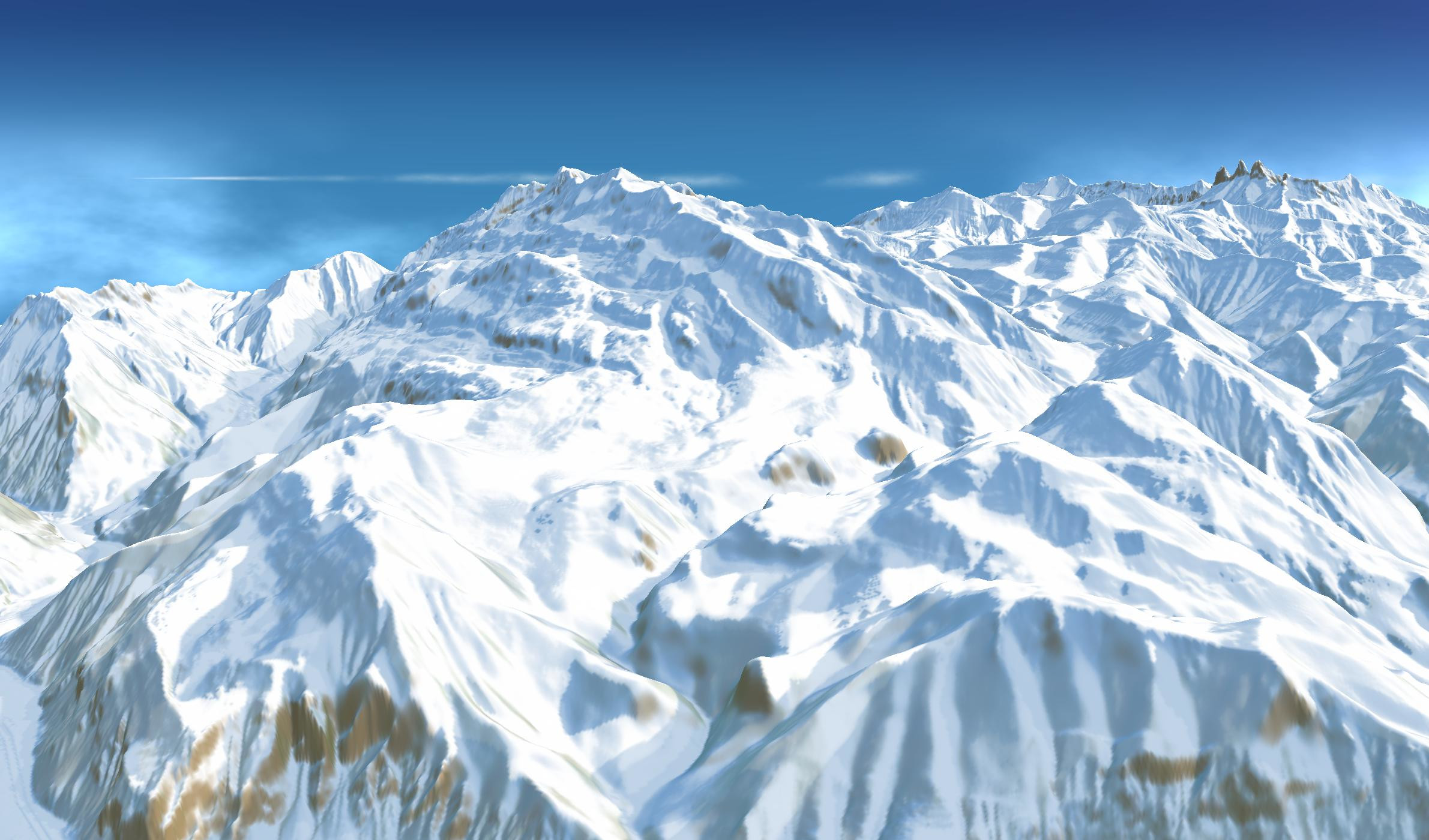Controllable Lighting Model for Designing Digital Panorama Maps in the Style of Novat

Abstract
In Europe and North America, panorama maps are widely used by mountain operators to promote their resorts. They played an important role in the development of winter sport tourism. Panorama artists who have become prominent masters in the field all share a similar creative process while achieving different styles in the end. Stylistic studies have been published for the work of Heinrich C. Berann, Heinz Vielkind, James Niehues, and Pierre Novat.
Producing a hand-painted panorama map is a challenging task, involving a broad range of skills. Even for masters such as Heinrich C. Berann or Pierre Novat, the production time for large paintings can take up to several months. Panoramists, though experts at crafting beautiful aerial maps of the mountain, are now a dwindling profession due to these constraints. Indeed, ski resorts rely more and more on CGI to produce panoramas. Although fast, 3D rendering systems lack the editing tools to enable the creation of panoramas of similar artistic quality. Artists are often required to manually or digitally repaint parts of the rendered images to achieve the desired result.
For artistic reasons and relief depiction purposes, panoramists depart from the simplified hill shading models used in 2D mapping. A panorama map displays ideal weather conditions, at either sunset or sunrise. However, a realistic depiction of lighting effects caused by the illumination at these times can impair the readability of the map. Therefore, panoramists must invent new ways of shading the terrain surface, casting shadows, and depicting complex effects such as indirect illumination. A careful lighting design prevents shadows cast by the sun from masking important areas, and features parallel to the light direction from lacking contrast.
We propose a lighting model based on these observations and our stylistic study of Novat's artwork. Our lighting model takes advantage of the relative insensitivity of the human visual system to lighting inconsistencies. We propose to modify the direction of light locally at each point of a surface, in a way that ensures a better shape depiction. We do that for both shading and cast shadows separately and at multiple detail scales, so as to obtain a plausible while legible terrain depiction.